What to Do With an Abundance of Peppers
Six ways to preserve your banner crop for year-round enjoyment.
What to Do With an Abundance of Peppers
Six ways to preserve your banner crop for year-round enjoyment.
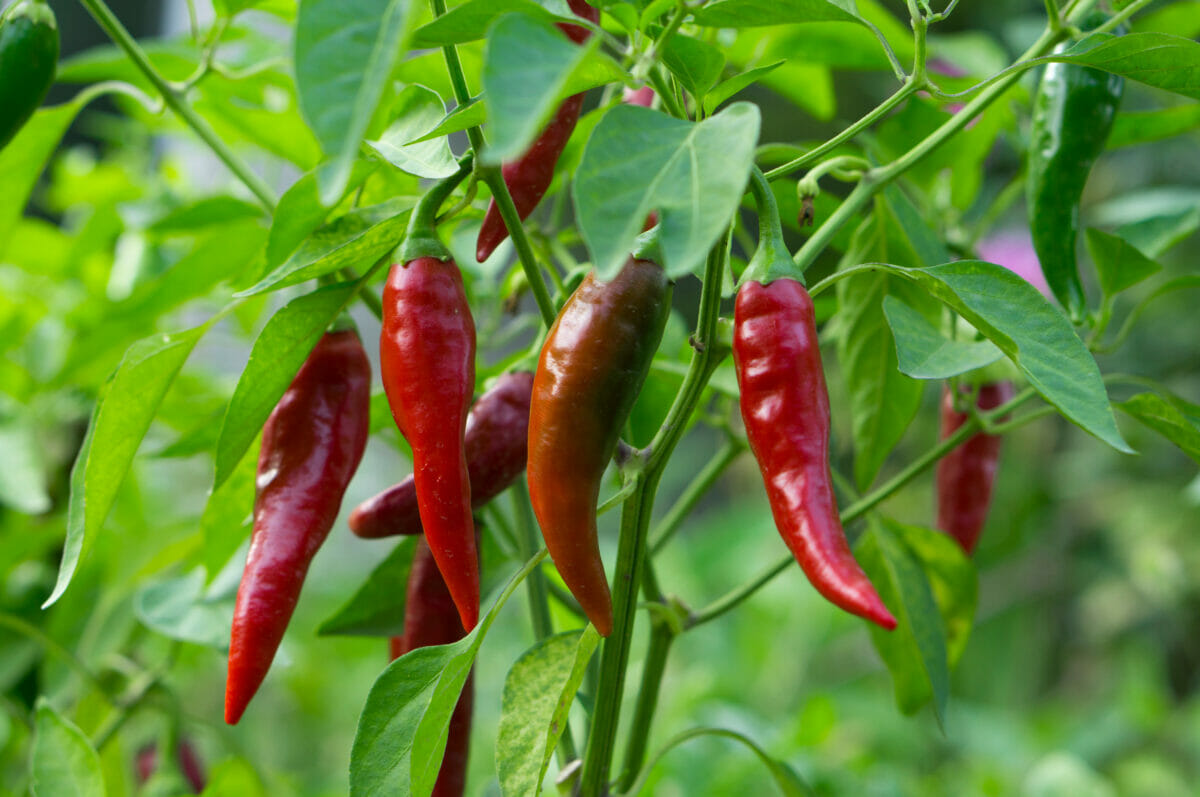
Pepper season is upon us.by Dudikov Sergey/Shutterstock
We’ve reached that point in late summer when my pepper plants are producing more than I can keep up with. There are only so many stuffed peppers, fajitas and stir fries one can eat. If your garden is also pumping out a bountiful amount of peppers right now, here are six different ways to preserve them to enjoy during a later season.
Remember: If you’re working with hot peppers, be careful when handling them. Wear gloves to protect your hands from the capsaicin (the compound that gives hot peppers their spicy kick) and never rub your eyes!
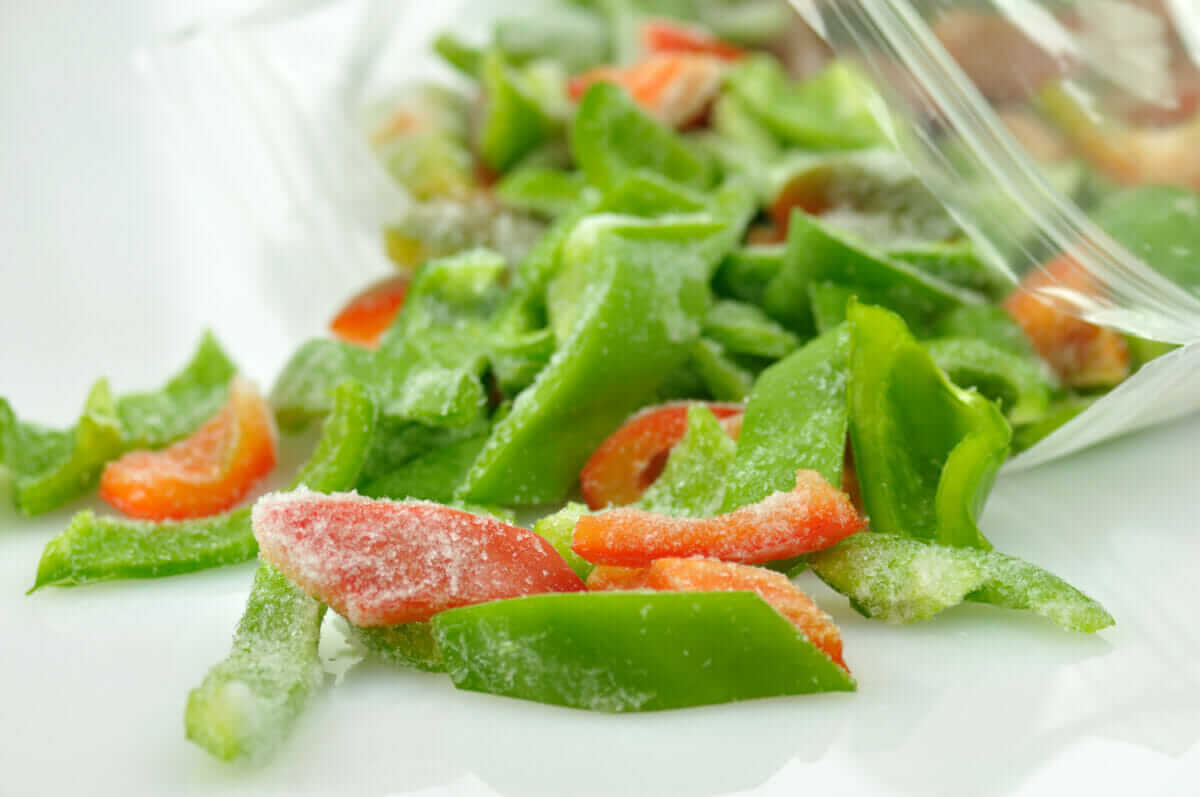
Freeze Them
Peppers freeze exceptionally well. For sweet and bell peppers, remove the stems, seeds and membranes. Chop them up as you’d like to cook them later—in strips or diced—and spread out on a tray so they aren’t touching each other. Place the tray in the freezer until the pieces are firm, then transfer them to a freezer-safe storage bag. Smaller, hotter peppers such as jalapenos, serranos, habaneros and Bird’s eye chili peppers are better off frozen whole.
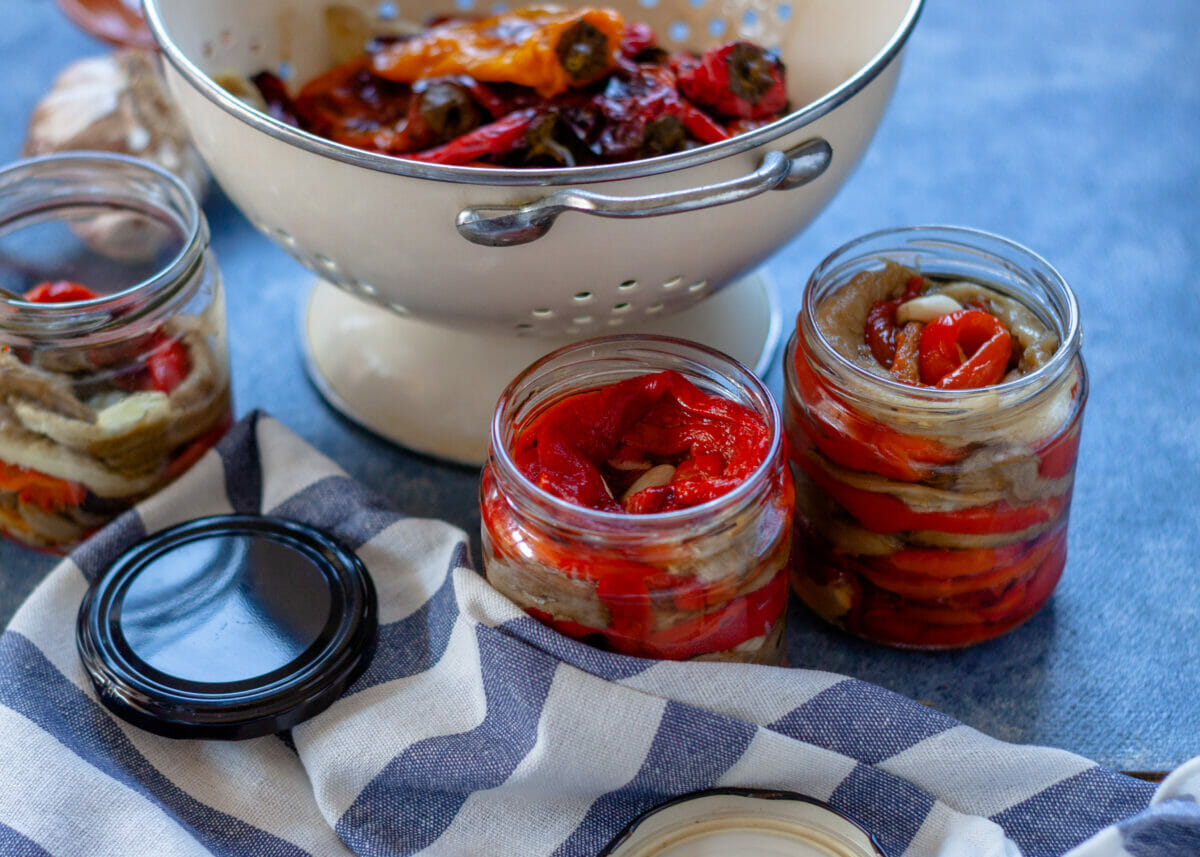
Can Them
If you’ve preserved peppers before, chances are that’s been by canning them. Jarred roasted red peppers are good to have on hand throughout the year, whether to nibble on by themselves or to add to a sandwich or pasta dish. To make your own, allow the red bell peppers to fully ripen. Char them in a broiler or over a flame, remove the blackened skin and seeds. Following these canning directions, jar with vinegar, lemon juice and an olive oil marinade. You can also puree the peppers into a spread before canning.
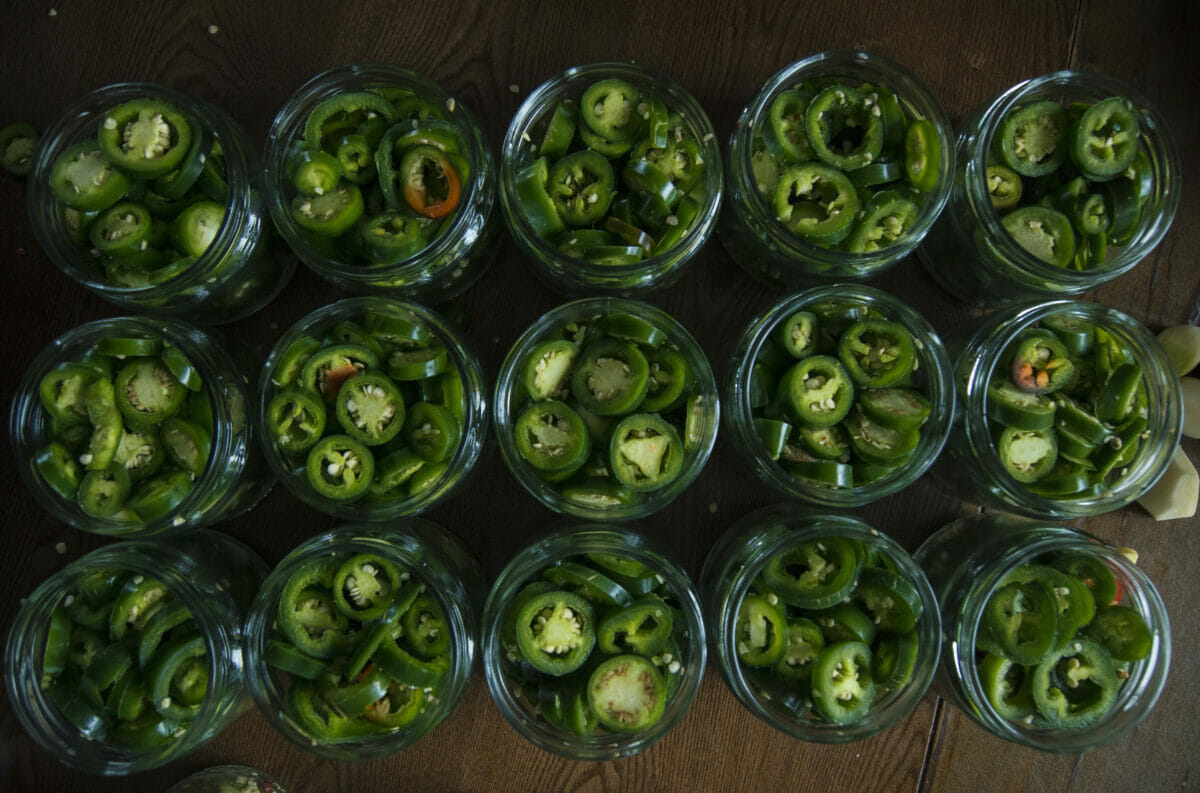
Pickle Them
One great way to preserve the color and flavor of spicy peppers is to pickle them. If you like your peppers hot, leave them whole or simply slice them in half. If you want to tone down their heat, slice them up and remove the seeds. You can also pickle a variety of different peppers—bell peppers, banana peppers, jalapeño or habanero peppers—together. Just be aware that adding any hot peppers to the mix will turn all the peppers in the jar spicy once you add the brine, so add them sparingly. Follow the steps in this pickling guide, adding the spices of your choice—such as onion, garlic cloves, peppercorns, mustard seeds, dill seeds, sesame seeds or bay leaves—to each batch.
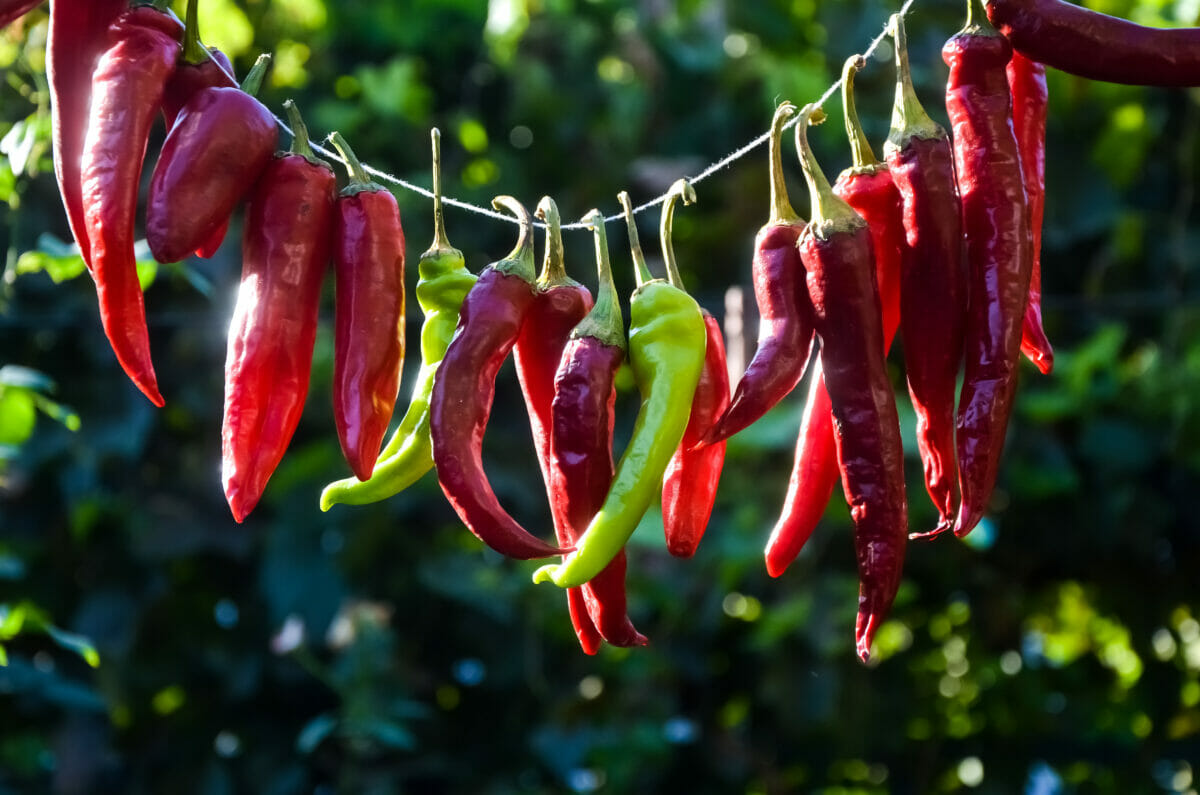
Dry Them
Dehydrating peppers is a good and easy way to store them for months. Chili peppers such as poblano, red and green jalapeños, paprika and chile de Arbol peppers dry well. Once dried, store in an airtight container away from sunlight. Dried peppers can be ground into powders or rehydrated to use in sauces, soups, stews or even added to a pot when boil ing dried beans. Follow one of these three drying methods.
— If you live in a hot climate with day temperatures above 85 degrees Fahrenheit, thread the peppers onto a string and hang the peppers to dry in an area with good air flow and sunshine. It should take three to four weeks until they’re fully dried.
— If you live in a more humid climate, using a food dehydrator is the quickest and easiest way to dry peppers. Spread the peppers out on the screens and set the temperature between 125 and 135 degrees Fahrenheit. It can take between four and 12 hours for them to dry completely, depending on the peppers’ size.
— If you live in a humid climate and don’t have a dehydrator, don’t fret. You can also dry peppers in the oven at a very low temperature. Spread the peppers out on baking sheets and place in an oven preheated to 150 degrees Fahrenheit. Leave the oven door open a crack to allow moisture to escape. Check on the peppers every 30 minutes until they are dry, usually within one to two hours.
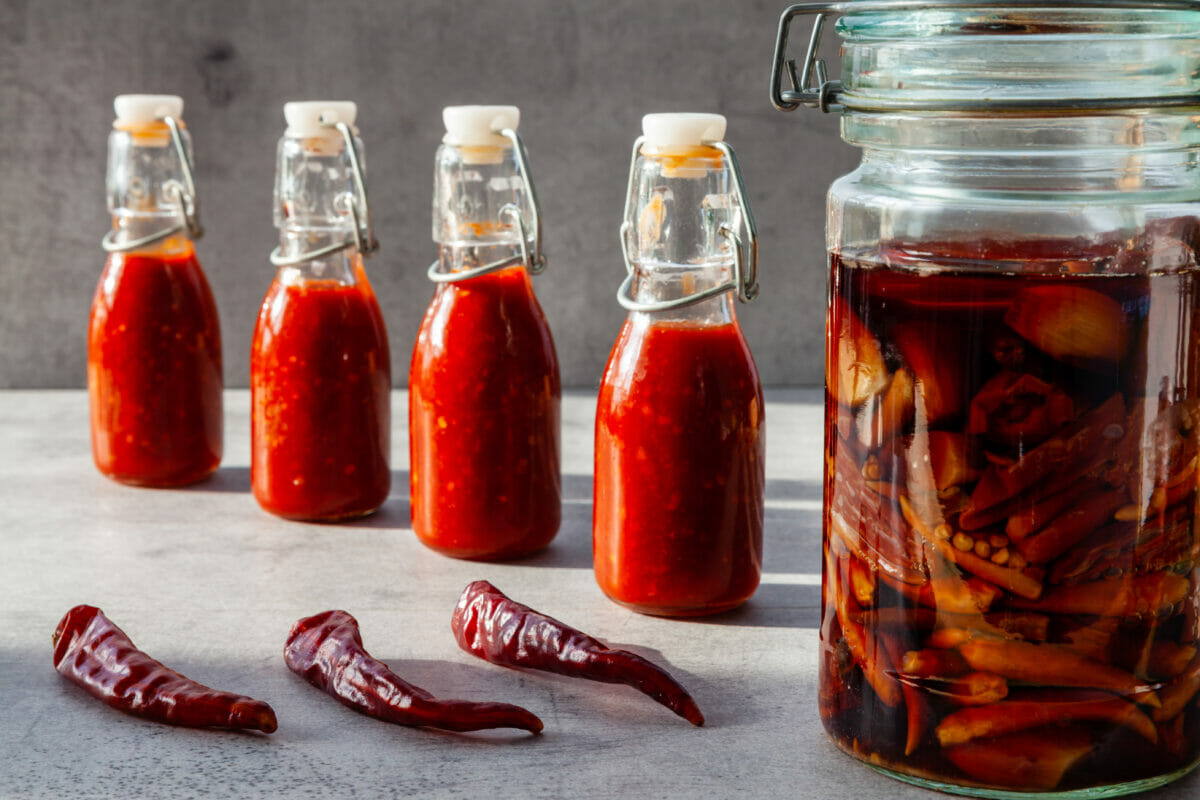
Ferment Them Into Hot Sauce
To make a fermented hot sauce, fill a two-quart jar with any type(s) of fresh hot chilies, garlic cloves and onion or thinly sliced carrot (both optional). To make a milder version, you can use bell peppers to temper the hot chilis. Following this fermentation guide, make a saltwater brine and pour over the chili mixture, pushing them down so they are completely covered. Use a fermentation weight to keep everything submerged, then place a lid on loosely to keep bugs out while leaving room for fermentation gases to escape. Store in a dark, cool place for three to seven days, checking on it daily to make sure there are bubbles forming.
When you see a cloudy brine has formed, that’s the sign you have a safe and successful ferment. Strain the brine and save it. Puree your chili mixture in a blender with a cup of the brine until smooth. Add any spices or herbs you’d like at this step, then add the sauce to a squeeze bottle and store in your fridge. It’s important to make sure your hot sauce container has some way for air to escape, because the fermented hot sauce is alive and will continue creating bubbles. If you store it in an airtight glass jar, it will explode.

Infuse Them Into Spirits
Want to spice up the cocktails you’re making at home? An easy way to do this is by adding spicy peppers to different spirits to infuse them with their flavor. Start by adding slices of fresh jalapeño to vodka or an agave-based spirit such as tequila, keeping the seeds intact, and letting them soak for about 24 hours. Once you have the process down, experiment with different pepper varieties and spirits until you find a winning combination.
Follow us
This work is licensed under a Creative Commons Attribution-NoDerivatives 4.0 International License.
Want to republish a Modern Farmer story?
We are happy for Modern Farmer stories to be shared, and encourage you to republish our articles for your audience. When doing so, we ask that you follow these guidelines:
Please credit us and our writers
For the author byline, please use “Author Name, Modern Farmer.” At the top of our stories, if on the web, please include this text and link: “This story was originally published by Modern Farmer.”
Please make sure to include a link back to either our home page or the article URL.
At the bottom of the story, please include the following text:
“Modern Farmer is a nonprofit initiative dedicated to raising awareness and catalyzing action at the intersection of food, agriculture, and society. Read more at <link>Modern Farmer</link>.”
Use our widget
We’d like to be able to track our stories, so we ask that if you republish our content, you do so using our widget (located on the left hand side of the article). The HTML code has a built-in tracker that tells us the data and domain where the story was published, as well as view counts.
Check the image requirements
It’s your responsibility to confirm you're licensed to republish images in our articles. Some images, such as those from commercial providers, don't allow their images to be republished without permission or payment. Copyright terms are generally listed in the image caption and attribution. You are welcome to omit our images or substitute with your own. Charts and interactive graphics follow the same rules.
Don’t change too much. Or, ask us first.
Articles must be republished in their entirety. It’s okay to change references to time (“today” to “yesterday”) or location (“Iowa City, IA” to “here”). But please keep everything else the same.
If you feel strongly that a more material edit needs to be made, get in touch with us at [email protected]. We’re happy to discuss it with the original author, but we must have prior approval for changes before publication.
Special cases
Extracts. You may run the first few lines or paragraphs of the article and then say: “Read the full article at Modern Farmer” with a link back to the original article.
Quotes. You may quote authors provided you include a link back to the article URL.
Translations. These require writer approval. To inquire about translation of a Modern Farmer article, contact us at [email protected]
Signed consent / copyright release forms. These are not required, provided you are following these guidelines.
Print. Articles can be republished in print under these same rules, with the exception that you do not need to include the links.
Tag us
When sharing the story on social media, please tag us using the following: - Twitter (@ModFarm) - Facebook (@ModernFarmerMedia) - Instagram (@modfarm)
Use our content respectfully
Modern Farmer is a nonprofit and as such we share our content for free and in good faith in order to reach new audiences. Respectfully,
No selling ads against our stories. It’s okay to put our stories on pages with ads.
Don’t republish our material wholesale, or automatically; you need to select stories to be republished individually.
You have no rights to sell, license, syndicate, or otherwise represent yourself as the authorized owner of our material to any third parties. This means that you cannot actively publish or submit our work for syndication to third party platforms or apps like Apple News or Google News. We understand that publishers cannot fully control when certain third parties automatically summarize or crawl content from publishers’ own sites.
Keep in touch
We want to hear from you if you love Modern Farmer content, have a collaboration idea, or anything else to share. As a nonprofit outlet, we work in service of our community and are always open to comments, feedback, and ideas. Contact us at [email protected].by Shelby Vittek, Modern Farmer
August 19, 2021
Modern Farmer Weekly
Solutions Hub
Innovations, ideas and inspiration. Actionable solutions for a resilient food system.
ExploreExplore other topics
Share With Us
We want to hear from Modern Farmer readers who have thoughtful commentary, actionable solutions, or helpful ideas to share.
SubmitNecessary cookies are absolutely essential for the website to function properly. This category only includes cookies that ensures basic functionalities and security features of the website. These cookies do not store any personal information.
Any cookies that may not be particularly necessary for the website to function and are used specifically to collect user personal data via analytics, ads, other embedded contents are termed as non-necessary cookies.
I love freezing my peppers, I always keep a big bag that I harvest at the end of summer so I can use my own throughout the year, until the next batch is drive
Not a good idea to freeze jalapeño peppers. My two jalapeño plants produced too many peppers last year, so I froze most of them for a later use. Even though the flavors were still very good, to my surprise the “heat” on the peppers were all gone. The ones I kept unfrozen were extremely hot, and they were all from the same plants. Go figure …
grow hot peppers for years skipped this yr look for home.